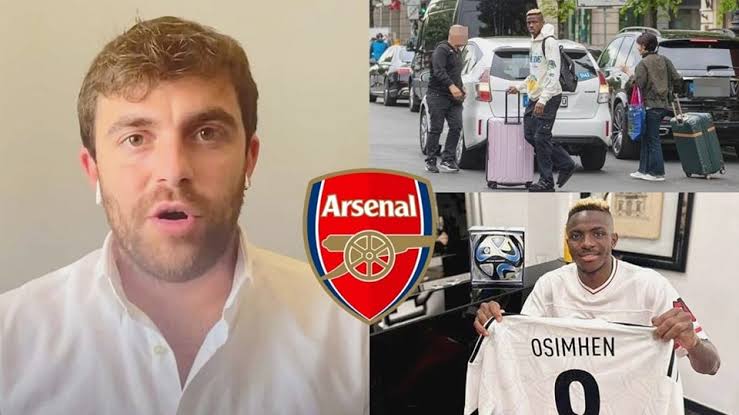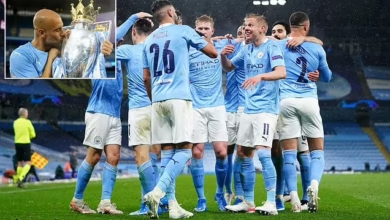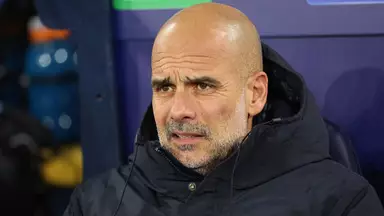A Comprehensive Analysis of the Summer’s Most Intriguing Transfer Saga.

The summer transfer window has once again delivered drama, intrigue, and high-stakes negotiations that captivate football fans worldwide. At the center of one of the most compelling stories emerging from the 2025 transfer market is Victor Osimhen, the prolific Nigerian striker whose decision-making process has become a fascinating case study in modern football’s complex transfer dynamics. The 26-year-old forward finds himself at a career crossroads, with his choices reverberating through multiple top-tier clubs and potentially reshaping the attacking landscapes of several European giants.
Osimhen’s recent rejection of a substantial £63 million offer from Saudi Arabian powerhouse Al-Hilal has sent shockwaves through the football world, particularly as it appears to have been influenced by genuine interest from Premier League heavyweights Arsenal and Manchester United. This decision represents far more than a simple preference for European football over the lucrative Saudi Pro League; it demonstrates the enduring allure of the Premier League and the Champions League, even in an era where Middle Eastern clubs are offering unprecedented financial packages to attract world-class talent.
Al-Hilal’s pursuit of Osimhen represents the Saudi Pro League’s continued ambitious strategy to establish itself as a destination for elite footballers. The £63 million agreement with Napoli was not merely a transfer fee but a statement of intent from a club that has already attracted numerous high-profile players to the region. The timing of this proposed move was particularly strategic, coinciding with the Club World Cup preparations and designed to ensure Osimhen’s availability for their three crucial group stage matches in FIFA’s revamped tournament format.
The confidence emanating from Al-Hilal’s camp was palpable, with sources suggesting that a deal could be finalized before June 10, which marks the first summer transfer window deadline. This optimism was built on the foundation of previous successful negotiations and the understanding that financial incentives often prove decisive in modern football transfers. However, the Saudi club’s approach, while financially attractive, failed to account for the complex motivations that drive elite athletes beyond monetary considerations.
Reports from Nigeria confirmed that this rejection marked the fifth proposal from Al-Hilal that Osimhen had declined, indicating a pattern of determined pursuit met with equally determined resistance. The striker’s preference to remain in European football speaks to several factors: the competitive level of European leagues, the global visibility and prestige associated with competitions like the Premier League and Champions League, and perhaps most importantly, the career trajectory implications for a player still in his prime years.
According to sources close to the situation, particularly reports from Italian publication Tuttosport, Osimhen’s decision to reject Al-Hilal’s advances was significantly influenced by his awareness of concrete interest from Arsenal and Manchester United. This revelation transforms the narrative from a simple rejection of Saudi Arabian football to a strategic career decision based on opportunities within Europe’s most competitive leagues.
Both Arsenal and Manchester United find themselves in the market for a new center forward, a position that has become increasingly crucial in modern football’s tactical evolution. The striker role has transformed from a traditional goal-scoring position to a multifaceted role requiring technical ability, physical presence, tactical intelligence, and the capacity to contribute to overall team play. Osimhen’s profile fits these requirements perfectly, making him an attractive proposition for clubs seeking to enhance their attacking options.
Arsenal’s interest in Osimhen aligns with their broader transfer strategy under Mikel Arteta’s management. The Gunners have consistently sought to add quality and depth to their squad while maintaining a balance between experience and potential. Osimhen represents the type of proven goalscorer who could make an immediate impact in the Premier League while offering the long-term value that Arsenal’s recruitment philosophy emphasizes. His age profile, at 26, places him in the sweet spot of having sufficient experience while retaining several peak years ahead of him.
Manchester United’s pursuit of Osimhen reflects their ongoing efforts to rebuild their attacking options and establish a more consistent goal-scoring threat. The Red Devils have experienced inconsistency in their forward line in recent seasons, and Osimhen’s proven track record of finding the net regularly could provide the reliability they seek. His physical attributes and playing style would suit the Premier League’s demanding nature, while his experience in high-pressure situations could prove invaluable for a club with championship aspirations.
Osimhen’s impressive loan spell at Galatasaray during the 2024/25 season has significantly enhanced his reputation and market value. His remarkable record of 37 goals in 41 matches demonstrates not only his consistent goal-scoring ability but also his adaptability to different tactical systems and playing environments. This performance has naturally led to Galatasaray’s desire to retain his services, adding another dimension to the transfer saga.
The Turkish club’s interest in keeping Osimhen represents a fascinating subplot in this transfer story. Galatasaray has benefited enormously from his presence, and his goal-scoring record has undoubtedly contributed to their domestic and European campaigns. However, the financial realities of Turkish football make it challenging for Galatasaray to compete with the financial packages offered by Premier League clubs or even Al-Hilal. Their hope likely rests on Osimhen’s appreciation for the playing environment and his relationships within the club, factors that sometimes influence player decisions beyond pure financial considerations.
The transfer market’s interconnected nature is exemplified by the parallel interest in Viktor Gyokeres, another striker who has emerged as a target for Arsenal, Manchester United, and Juventus. Gyokeres, also 26, has enjoyed a remarkable season with Sporting, netting 54 goals in 52 games, statistics that have positioned him as one of Europe’s most sought-after forwards.
Juventus’s particular interest in Gyokeres, describing him as a ‘dream signing’ and placing him at the top of their shopping list, creates an interesting dynamic in the striker market. The availability of Gyokeres for approximately £60 million, with Sporting eager to sell, presents an alternative option for clubs pursuing Osimhen. This parallel pursuit highlights the competitive nature of the current transfer market and the premium placed on proven goal-scorers.
Gyokeres’s journey from Coventry City to Sporting for £16.7 million just two years ago, followed by his emergence as a £60 million asset, illustrates the rapid value appreciation possible in modern football. His success story also demonstrates the importance of the right environment and tactical fit for player development, factors that clubs must consider when evaluating potential signings.
From Napoli’s perspective, the Osimhen situation presents both opportunities and challenges. The club has already agreed to a £63 million deal with Al-Hilal, indicating their willingness to part with their star striker for the right price. However, Osimhen’s rejection of the Saudi move leaves Napoli in a complex position, balancing the player’s preferences with their own financial and sporting objectives.
Napoli’s approach to this situation will likely influence their relationship with Osimhen and their ability to maximize the transfer fee. The Italian club may need to consider whether to pursue alternative buyers at similar price points or potentially adjust their expectations based on market conditions. The timing of any eventual transfer will also be crucial, as clubs’ transfer budgets and priorities can shift throughout the summer window.
Osimhen’s decision-making process reflects broader trends in the modern transfer market, particularly the increasing influence of player preferences over purely financial considerations. While the Saudi Pro League has successfully attracted numerous high-profile players through substantial financial packages, Osimhen’s rejection suggests that sporting ambitions and career trajectory considerations remain paramount for many elite athletes.
This situation also highlights the continued dominance of European football’s top leagues in attracting elite talent. Despite the financial disparities, the Champions League, Premier League, and other major European competitions retain their allure due to their competitive levels, global visibility, and historical prestige. For players like Osimhen, who are still in their prime years, the opportunity to compete at the highest level and enhance their legacy appears to outweigh immediate financial benefits
The timing of Osimhen’s decision-making process is crucial within the context of the summer transfer window. Al-Hilal’s desire to complete the deal before June 10 reflected their strategic planning for the Club World Cup, but it also demonstrated the time-sensitive nature of modern transfers. Players, clubs, and agents must navigate complex timelines while balancing multiple interests and objectives.
For Arsenal and Manchester United, the prolonged nature of the Osimhen situation requires careful planning and potentially the development of alternative strategies. Transfer windows are characterized by their unpredictability, and clubs must be prepared to adapt their approaches based on changing circumstances and player decisions.
Several scenarios could emerge from the current situation. Osimhen might ultimately choose to join Arsenal or Manchester United, depending on their ability to meet Napoli’s valuation and the player’s personal preferences regarding playing style, tactical fit, and career objectives. Alternatively, he could opt to remain at Galatasaray for another season, particularly if the financial and sporting conditions align with his goals.
The possibility of Osimhen choosing a different European club entirely cannot be discounted. Juventus’s interest in both Osimhen and Gyokeres suggests that the Italian giants might present an attractive option, particularly given their historical success and the opportunity to compete in Serie A and potentially the Champions League.
Victor Osimhen’s transfer decision represents more than a simple choice between clubs or financial packages; it embodies the complex decision-making processes that define modern football careers. His rejection of Al-Hilal’s substantial offer in favor of potential European opportunities demonstrates the enduring appeal of the continent’s top leagues and the importance of sporting ambitions in elite football.
The outcome of this transfer saga will likely have significant implications for multiple clubs and could influence the broader striker market. Whether Osimhen ultimately joins Arsenal, Manchester United, remains at Galatasaray, or surprises everyone with an alternative choice, his decision will be closely analyzed for its impact on his career trajectory and the clubs involved.
As the summer transfer window continues to unfold, the Osimhen situation serves as a reminder of the complex factors that influence player decisions in modern football. Financial considerations, while important, are balanced against sporting ambitions, career development opportunities, and personal preferences. The resolution of this transfer saga will undoubtedly provide insights into the current state of the global football market and the relative strengths of different leagues and clubs in attracting elite talent.
The story of Victor Osimhen’s transfer decision continues to evolve, but its significance extends beyond the immediate outcome. It represents the ongoing evolution of football’s transfer market, the enduring appeal of European competition, and the complex decision-making processes that define the careers of elite athletes in the modern game.














